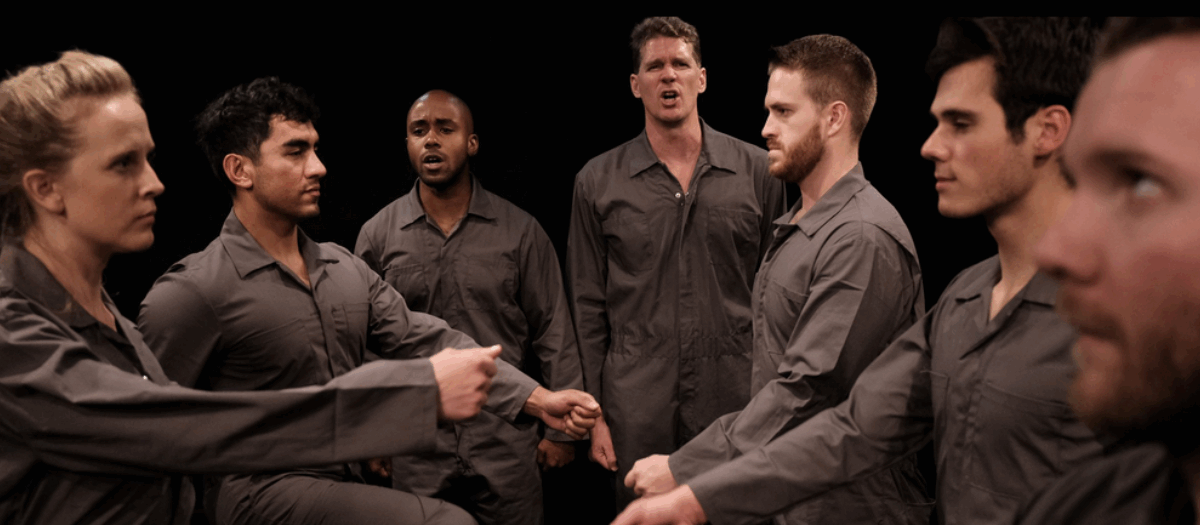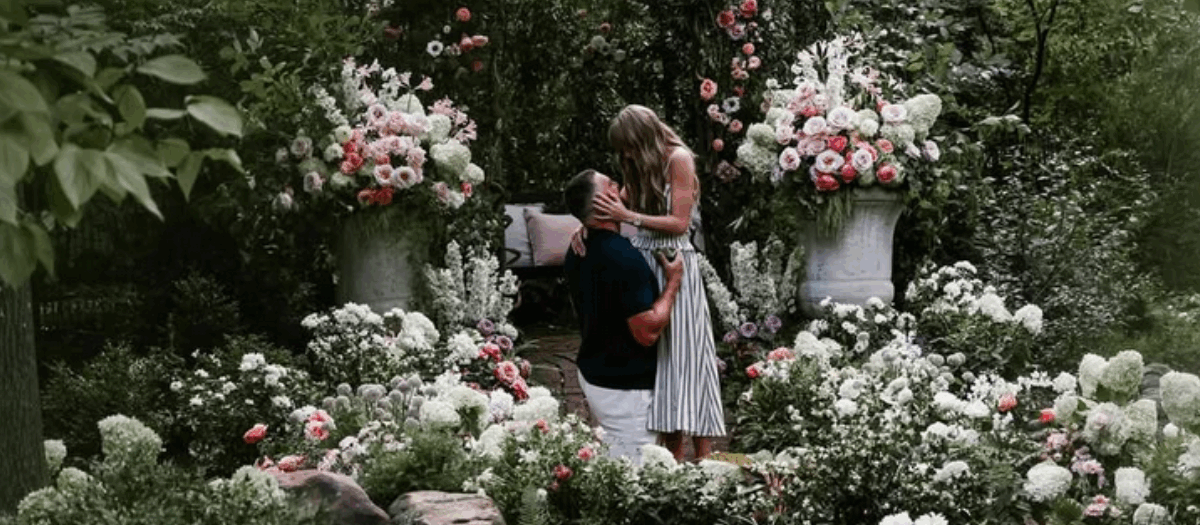Where formalwear meets flip-flops
Philadelphia is basically a “dress down” kind of town, where it’s not unusual to see theater and concert-going patrons in casual clothes bordering on the “rustic.” By “rustic” I mean torn or split jeans, corduroys with holes or stains, or shirts that resemble lumber yard work frocks.
I sometimes think the dress down style here has something to do with the city’s Quaker heritage. The original Quakers liked “plainness” over ornate or showy materials. New Yorkers have often observed Philadelphia’s penchant for dress down attire, especially when it comes to theater audiences. A long time ago I remember reading a New Yorker article about Philadelphia men wearing bib overalls to the theater. Bib overalls, of course, are what farmers in the country wear. You don’t expect to see men in bib overalls when attending opening night in one of the city’s major theaters.
When it comes to dress, Philadelphia is also a city of extremes. Consider the class of men who like to wear bow ties. These fellows can be any age; they can be prep school grads, conservative Republicans (or even global elite Democrats), men from old money suburban families, or even men who aspire to attain something of what wearing a bow tie seems to suggest: sophistication beyond the pale.
In some cases, a bow tie can look affected, although wearing the right bow tie with a nice seersucker suit is a sure way to suggest money and class.
Suspenders are another specialty dress item. They can look like the Farmer in the Dell or just downright cool, depending on what they are holding up. I wore suspenders as a boy with white shirts and a small checkered bow tie. To get my attention sometimes or to make a point, my mother would snap my suspenders. Perhaps that’s why I opted to stop wearing them, although it may also have been because suspenders were sometimes known to come undone in violent recoil that had me holding up my trousers for dear life. To this day whenever I see somebody in suspenders I experience a slight urge to snap them.
As for bowties, we wore them in parochial school as an alternative to the sometimes (boring) necktie.
I grew up when boys and men wore ties to school, church and work, when shirts were tucked into trousers in the classic Brooks Brothers mode rather than left to hang over trousers like untailored drapery. Today it is fashionable among many twenty-something men to wear shirts — dress, casual or grunge — hanging over their trousers, a fashion trend started years ago by overweight designers who wanted to hide the huge expanse of their waist line. A tucked-in shirt, after all, accentuates body image.
Many, but not all, younger men go to extreme lengths to avoid wearing sports jackets and suits. I have seen these guys under dress at social and press events where almost everyone present is wearing a jacket and tie. What amazes me is how these guys don’t seem to care that they stand out like boiler room janitors or party crashers.
Don’t get me wrong: I love old, sloppy clothes. Weather-beaten clothes are fun to wear around the house and to do work in. I tend to wear one work shirt, for instance — something I bought at the local thrift store — that is starting to sport holes, but because I like the shirt I have come to regard it as my work uniform. But I wouldn’t go to a museum exhibition opening in it.
When I was in my twenties I began to think of wearing suits and ties as the province of old men. You know the look: oversized sheen jackets, fat clown ties, neatly pressed baggy trousers and shiny black shoes that reflect up. My beloved old great aunt, who once corresponded with Clare Booth Luce and knew Connie Mack, expected me to dress in a tie whenever I visited her in Cathedral Village, a retirement/nursing home in Roxborough. Sometimes I complied, although I would only put the tie on when I entered the Village, and never wore it on the bus going there or returning home. There were other times when, out of stubbornness, I would decide, “NO tie for great aunt!” so I’d visit her with an open collar.
At no time, however, did I visit her with my shirt hanging out of my pants like those hipster exhibition janitors.
My great aunt, who was born in 1895, had no time for an open collar, while an open collar to me was a beautiful thing (like reading the poetry of Walt Whitman), especially in the summer. The prospect of having lunch with me with my open collar in the Cathedral Village dining room once drove her to tears. In her panic to make me look presentable she suggested that I wear one of her brooches in place of a tie.
Of course, it not being Halloween, I did a double take. “I’m sorry I didn’t bring the tie,” I said. “I will next time, if it means that much to you, but I’m going nowhere near that brooch.” We decided on a compromise: I would button the top button and leave it at that. Later, however, I saw that I was being unfair to her and so I made the decision that if a tie made her happy, why not wear one, especially if she’s paying for lunch?
Through the years I’ve come to realize that when it comes to dressing for events, it’s always better to be overdressed than under. In some cases it’s actually possible to do both, as hybrid dress configurations like the sports jacket/sweater/jean combination manages to bypass any suggestion of janitorial influences.
Suits and jackets today have lost the Sponge Bob Square look of yesteryear, thanks to certain European influences like shorter, tighter jackets, slimmer trousers and slim ties.
Of course, there are things I’d never wear, even if I found myself (during a theoretical Apocalypse, say) crawling on all fours in the streets in a search for water and food rations.
The items include: (1) sweat pants and sweat suits, which should never be worn outside a gym or the backyard. (2) Flip-flops: No self respecting man should wear flip-flops in the city (the beach is okay). There’s no sadder sight in contemporary life than watching a grown man in flip flops trying to descend the El steps at Girard and Front.
But please don’t think of me as a fashion expert.
I flunked a big test several years ago when I went to cover a Royal Oak Foundation lecture, The Day Parliament Burned Down, in the Grant Room of the Union League.
As I entered the building, I stopped by a Union League overseer who asked, “Do you have jeans on?” I might have been carrying a baggie of weed from Colorado, judging from her full frontal lunge in the direction of my shoes.
“No, ma’am,” I said, respectfully, “In fact, my natural tendency is to overdress. I am wearing dress Levi’s from the Port Richmond Plaza thrift store to match this very hard to find Calvin Klein corduroy jacket.”
“You are wearing jeans,” she said, patently ignoring the Lauren sweater, Italian shoes and a dress belt from Helsinki. A fashion debate then ensued at which point the overseer mused, “So far this evening we’ve had to turn away sixteen people.”
“Sixteen?!” I exclaimed, happening to glance over at a man on a lobby bench in the act of removing his jacket, when like a flash of lightning the overseer pointed at the culprit and said for all to hear, “Please do not remove your jacket, sir!” Two men behind me, also wanting to know how and why Parliament burned down, wore skinny peg ties (think Pee Wee Herman), tight jackets and a hybrid version of hipster petite casual slacks. They were also waiting for the overseer’s green light. To my astonishment they were allowed to pass through without the overseer ever checking their trousers.
Life is unfair sometimes.
It was not a good day, and I did not like being number seventeen, but out on the sidewalk, in the sunlight of truth, I could plainly see: the Levi’s on my body were, in fact, denim.
Thom Nickels is a Philadelphia-based journalist/columnist and the 2005 recipient of the AIA Lewis Mumford Award for Architectural Journalism. He writes for City Journal, New York, and Frontpage Magazine. Thom Nickels is the author of fifteen books, including “Literary Philadelphia” and ”From Mother Divine to the Corner Swami: Religious Cults in Philadelphia.” His latest is “Death in Philadelphia: The Murder of Kimberly Ernest.” He is currently at work on “The Last Romanian Princess and Her World Legacy,” about the life of Princess Ileana of Romania.




